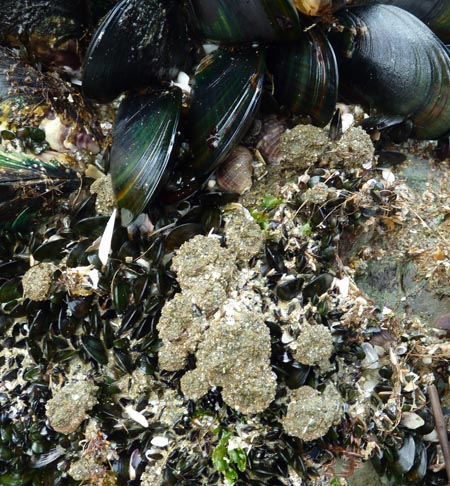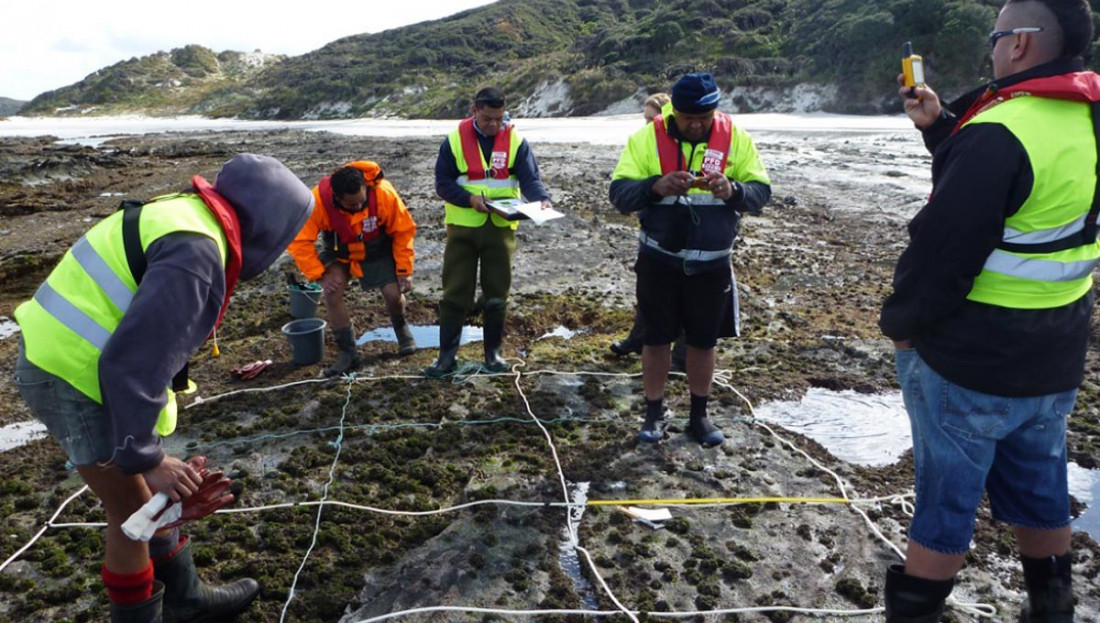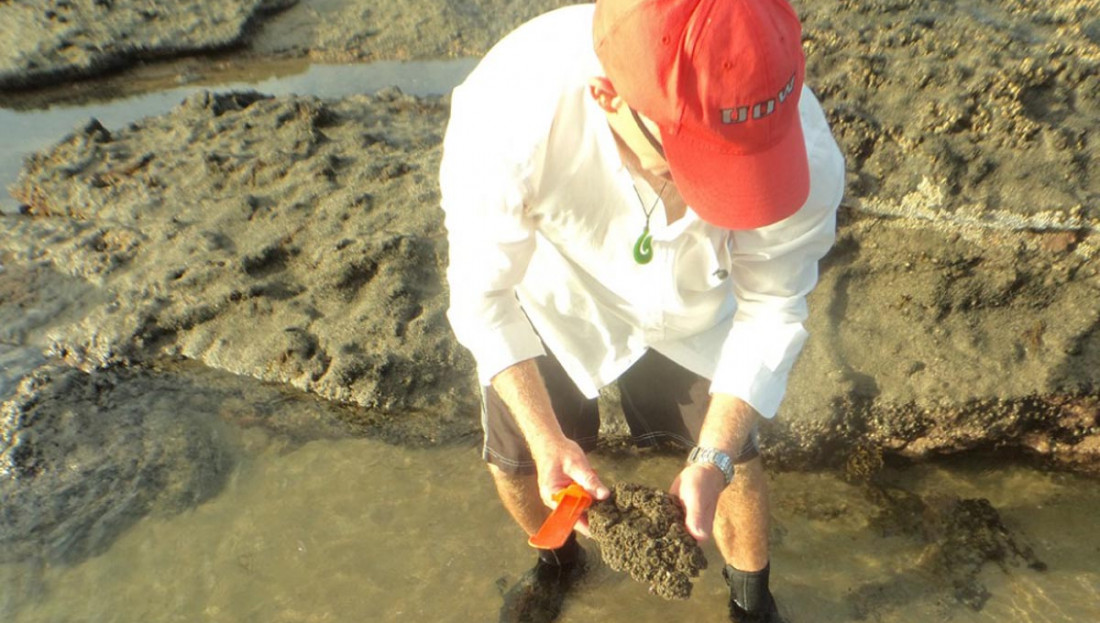Getting to grips with an Aussie invader
Date
16 October 2018
The Aussie invader, the Pyura sea squirt, has been found in intertidal mussel (kuta) beds in Northland, and the Ministry for Primary Industries (MPI) is collaborating with far north iwi on research looking at ways to get rid of it. So far their approach looks like it might just work.
‘Pyura’ is the abbreviated name given to a species of tunicate (a marine animal with a leathery skin, also called a ‘sea squirt’) found carpeting the rocks at Twilight Bay, near Cape Maria van Diemen, in the far north in 2008.
There are several native species belonging to the Pyura genus, but it turns out that the one found in the far north was Australian, called ‘Pyura doppelgangera.’
"We don’t know how this Aussie invader arrived here but it could have been attached to flotsam or on the hull of an infested boat which may have come close to our coast,” says Kathy Walls, Senior Adviser, MPI’s Biosecurity Response Team.
After finding this Aussie invader, MPI surveyed the far north’s western, northern and eastern coasts to see if they could find anymore.
Unfortunately, they did.

“We found Pyura in a lot of places, including the Tauroa Peninsula, the Bluff on Ninety Mile Beach, and Whareana Bay and Parengarenga Harbour on the east coast,” explains Kathy. “We’re pretty concerned at what we found because some of the intertidal mussel (kuta) beds looked as though they were being outcompeted by the sea squirt as they were found growing on and amongst the kuta. This might be bad news for kaimoana gathering and potentially, for settlement of kuta spat.”
“Once we knew the extent of how far Pyura had spread we realised that trying to remove every individual wouldn’t be feasible,” says Kathy.
“However, we did think that it might be possible to manage Pyura locally, by removing it from important areas, like kuta beds. So, for the next couple of years, MPI and far north iwi collaborated on research to find out whether removing the Pyura from experimental plots would keep it at bay.”
Preliminary results suggested this approach might work where it was important to protect the kuta beds.
“We used dive knives and paint scrapers to carefully remove the whole animal from the rock and put it in a rubbish bag for later disposal to landfill,” says Kathy.
Kathy was delighted when Andy Davis, from the University of Wollongong, New South Wales, Australia offered to come and study Pyura in 2014, because he was familiar with the species in Australia and might make some interesting observations in the New Zealand context.
Since Andy Davis’ work, researchers from New Zealand’s Cawthron Institute have been investigating the impact of Pyura on kuta on the Tauroa Peninsula, too. Watch this space!

